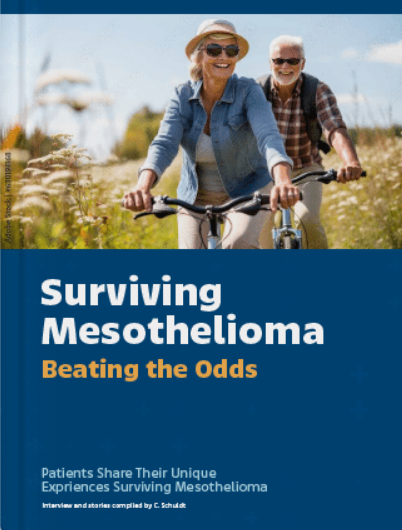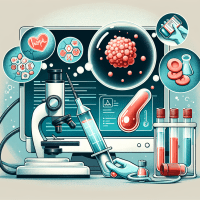Mesothelioma Early Detection Benefits: Advanced Diagnosis Strategies
Mesothelioma, a rare and aggressive form of cancer primarily linked to asbestos exposure, remains a major health concern for affected individuals. However, the benefits of early detection in Mesothelioma cannot be overstated. Through advanced screening and diagnostic tools such as biomarkers, imaging, and clinical assessments, patients have an improved chance for early intervention and better survival rates.

Understanding Mesothelioma and the Importance of Early Detection
Mesothelioma is known for its long latency period and subtle symptom development. Recognizing this, experts stress the timely identification of the disease to leverage early treatment options. Early detection not only enhances the effectiveness of treatments but also contributes to better overall quality of life. In this blog, we will deep-dive into the tangible benefits of early screening, including optimizing treatment plans and extending survival rates.
Key Screening Methods for Mesothelioma Early Detection
There are several screening methods that directly contribute to more effective cancer management. Below we break down the most prominent techniques:
1. Mesothelioma Imaging
Advanced imaging techniques such as CT scans, MRI, and PET scans help detect tumors at a stage where they might still be treatable. These tools are essential in determining the extent of disease spread, thus assisting in planning subsequent treatment interventions.
2. Biomarkers and Diagnostic Tests
Biomarkers have become a cornerstone in Mesothelioma diagnosis. Tools like the Soluble Mesothelin-Related Peptide (SMRP) test have shown promise in providing early indications of tumor presence along with differential diagnosis. Regular monitoring of biomarkers can lead to the early detection and prompt treatment of the disease.
3. Mesothelioma Screening Programs
Government and institution-based screening programs have been pivotal in raising awareness and providing early detection avenues to at-risk populations. For instance, programs in parts of the United States and Europe detail rigorous screening schedules, enabling early identification even before symptoms become pronounced.
| Screening Method | Description | Key Benefit |
|---|---|---|
| Imaging Techniques | CT, MRI, and PET scans | Detailed visualization of the tumor |
| Biomarker Tests | SMRP and other blood-based markers | Early detection and monitoring |
| Clinical Screening Programs | Institution-led awareness and testing schedules | Timely diagnosis in at-risk populations |
Comparing Diagnostic Tools and Treatment Options
With the constant evolution in medical technology, selecting the right diagnostic tool is crucial. Leading platforms like GE Healthcare and Siemens Healthineers are at the forefront of diagnostic imaging technology. Their advanced systems offer high-resolution images and real-time data analysis which are critical in Mesothelioma screening. In addition, blood tests provided by established laboratories such as LabCorp and Quest Diagnostics ensure precision in biomarker detection.
For many medical practitioners, integrating these tools into a streamlined diagnostic workflow means quicker turnarounds and more informed treatment decisions. This precision improves outcomes by enabling healthcare providers to tailor treatments based on individual disease profiles.
Actionable Strategies for Healthcare Providers and Researchers
For those deeply involved in Mesothelioma research and clinical care, focusing on proactive early detection strategies is paramount. Here are some actionable strategies:
Enhanced Screening Initiatives
Healthcare providers should consider implementing regular screening for high-risk individuals. Collaborating with schools, workplaces, and local organizations can enhance outreach. Internal resources like our Mesothelioma Screening Updates provide detailed insights on how to effectively target at-risk groups.
Utilize Advanced Diagnostic Platforms
Investing in platforms like the latest CT and MRI machines from Siemens Healthineers can significantly improve early detection rates. Combining these diagnostic tools with biomarker tests from laboratories such as Quest Diagnostics presents a robust screening solution.
Implement Digital Records and Telemedicine
Adopting digital record systems and telemedicine consultations can help in tracking patient progress and ensuring timely follow-ups. Tools like Epic Systems for electronic health records and Doxy.me for telehealth are being widely used. These systems streamline data collection and facilitate prompt diagnosis.

Comparative analysis of leading diagnostic tools helps identify the best methods for early Mesothelioma detection.
Addressing Common Concerns and FAQs
Misconceptions about Mesothelioma early detection are widespread. Many worry about the side effects of frequent screening or the cost of advanced diagnostic tools. It is crucial to understand that early detection plays a significant role in managing the disease and often leads to more effective, less invasive treatment options. By leveraging trusted technology and clinical expertise, patients can achieve better outcomes.
For medical practitioners and researchers, staying current on the latest diagnostic advancements is essential. Regular participation in webinars, reading peer-reviewed journals, and engaging in professional networks can help bridge any knowledge gaps.
Next Steps and Call to Action
Early detection of Mesothelioma can be life-changing. Now is the time for healthcare professionals to adopt these actionable strategies and commit to regular screening and advanced diagnostics. We encourage you to explore our comprehensive guide on Mesothelioma treatment options and join our upcoming webinar to stay informed about cutting-edge research and diagnostic technologies.
For patients and caregivers, understanding the benefits of early detection can provide the confidence needed in navigating treatment decisions. Sign up for our newsletter today to receive the latest updates and actionable insights delivered directly to your inbox.






